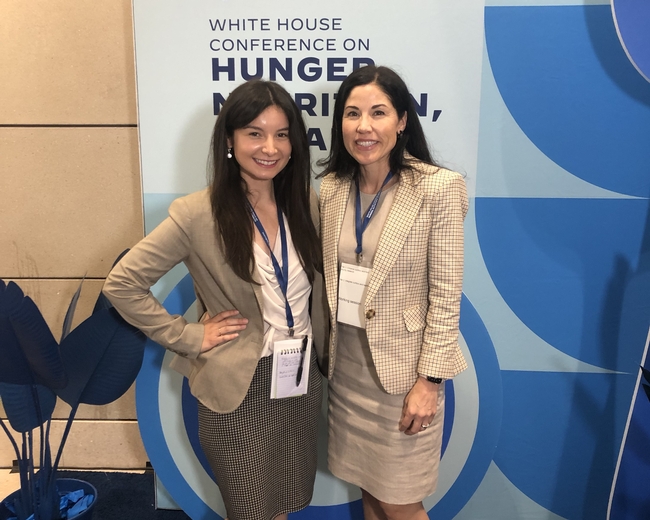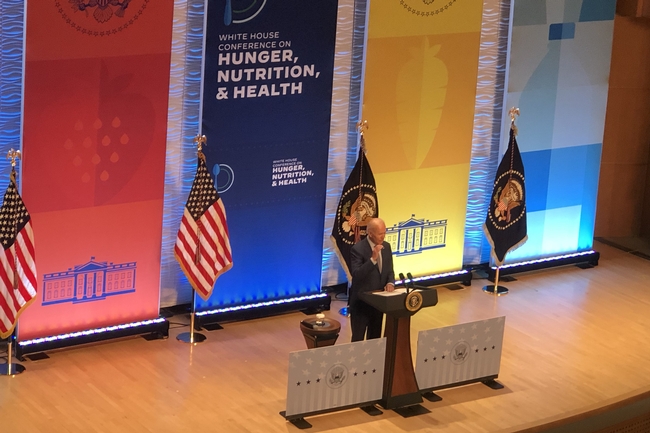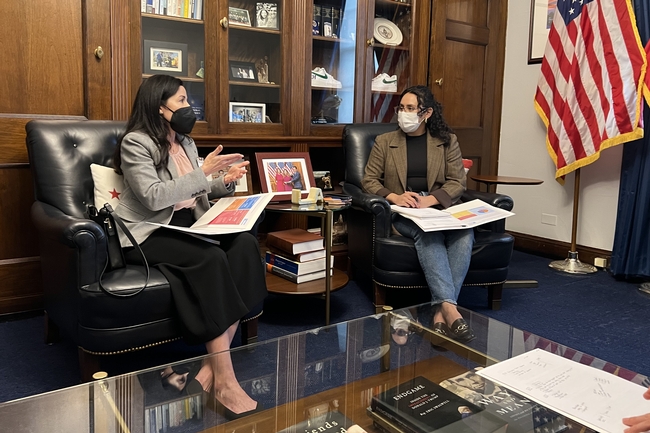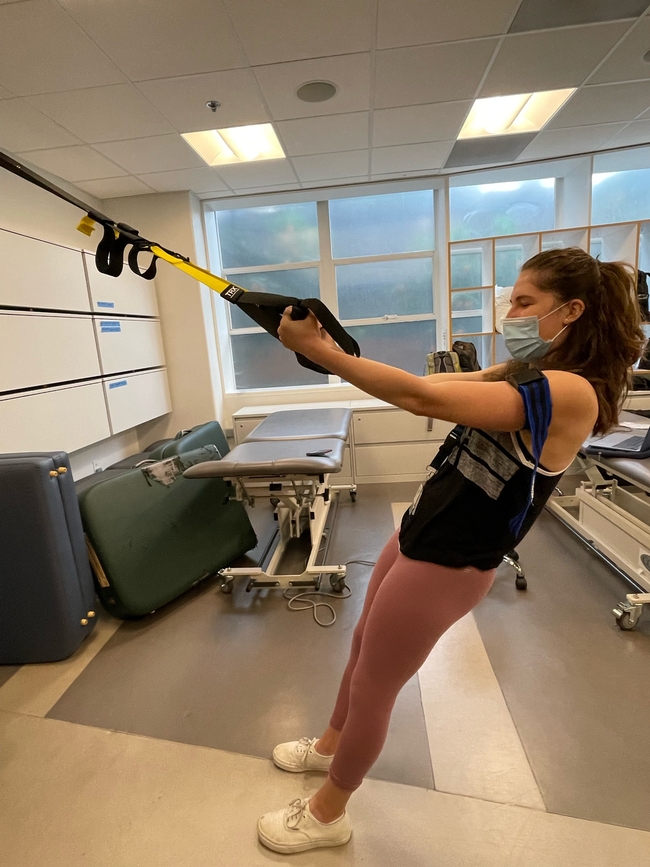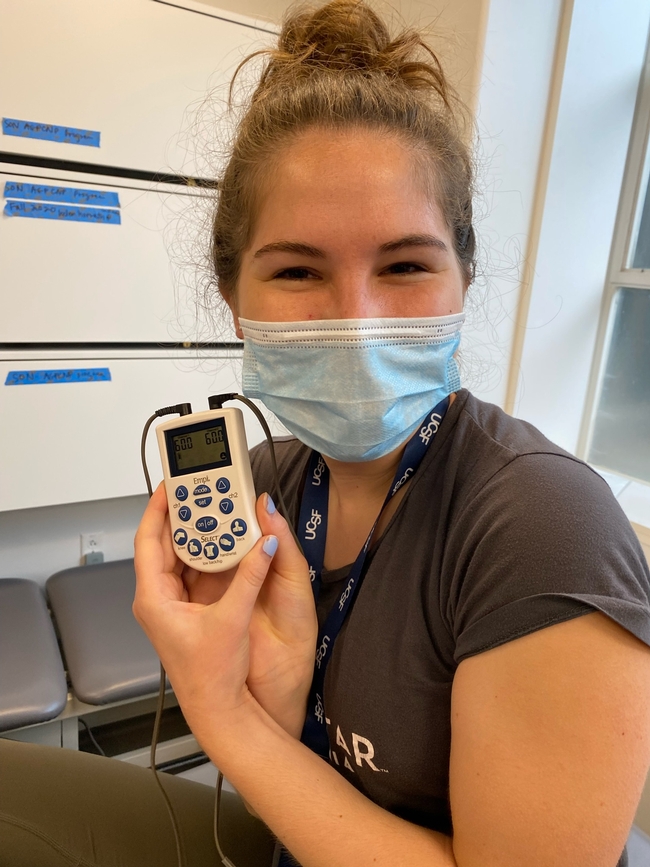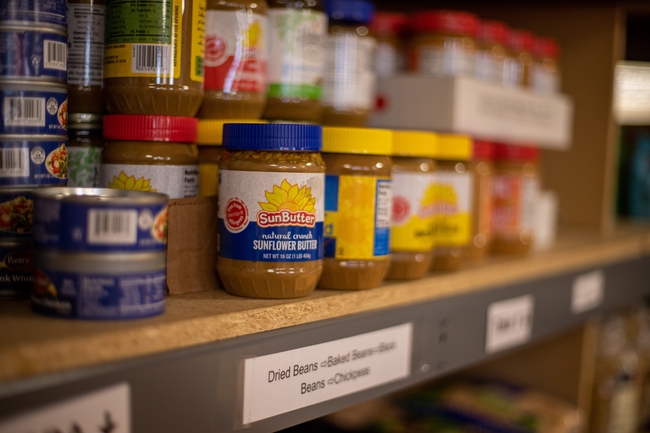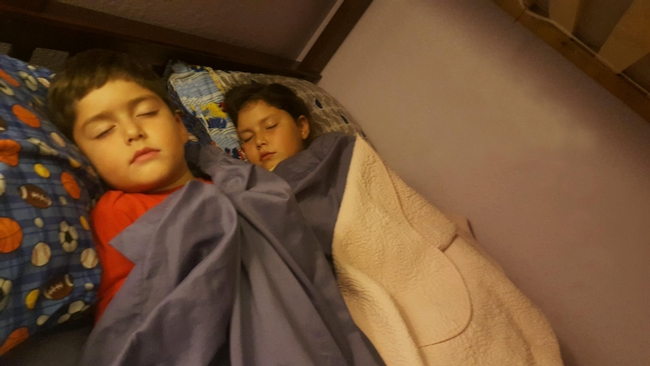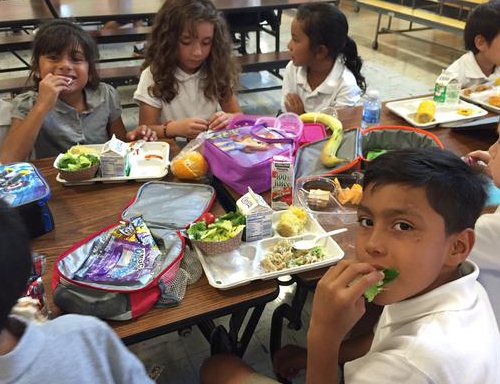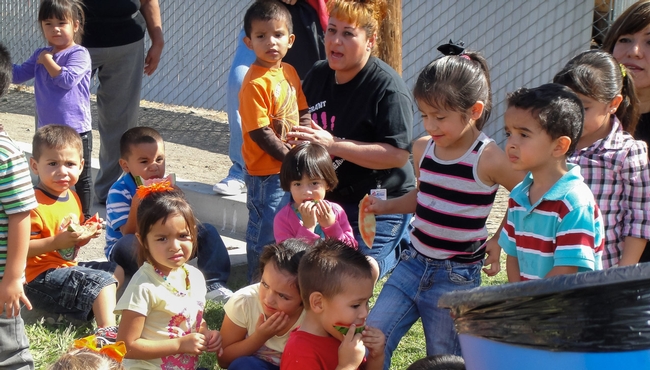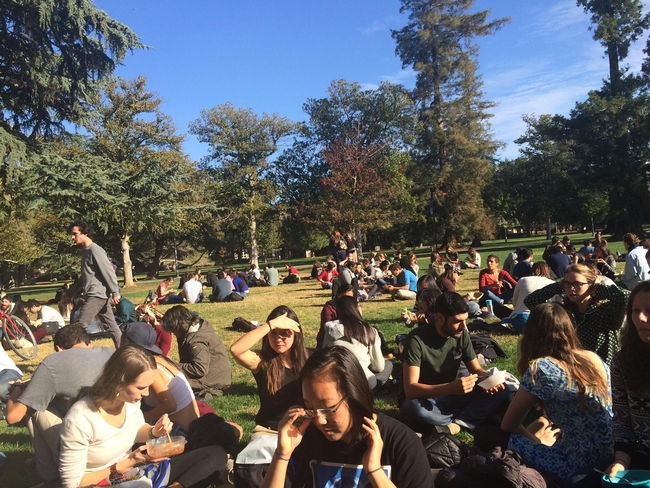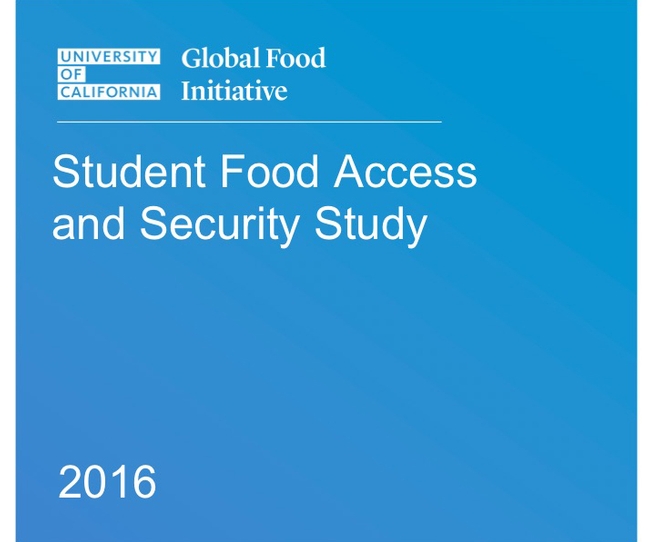Posts Tagged: Suzanna Martinez
Nutrition Policy Institute work underpins historic White House conference
Researchers contribute recommendations for national strategy on hunger, nutrition, health
At the first White House Conference on Hunger, Nutrition and Health convened since 1969, President Biden announced on Sept. 28 a national strategy “to end hunger in America and increase healthy eating and physical activity by 2030 so fewer Americans experience diet-related diseases.” Much of the foundational research undergirding the strategy has been informed in part by the Nutrition Policy Institute, a program of UC Agriculture and Natural Resources.
“Science is the work of many – and no one study answers all the questions – but we have a tremendous body of work that has contributed to this conference, building from all the programs and changes that were made from the last conference,” said NPI director Lorrene Ritchie.
The original Nixon-era conference produced about 1,800 recommendations – and 1,600 were eventually implemented in the subsequent years, according to Stacy Dean, U.S. Department of Agriculture Deputy Under Secretary for Food, Nutrition and Consumer Services.
A litany of far-reaching programs grew from or were propelled by the 1969 conference: the School Breakfast Program, WIC (the Special Supplemental Nutrition Program for Women, Infants and Children), SNAP (the Supplemental Nutrition Assistance Program)-Ed and CalFresh Healthy Living UC, the Expanded Food and Nutrition Education Program, and more.
This history illustrates the potential for sweeping change from this 2022 conference – which gathered about 500 experts and advocates (with 1,000 more participating online) – and from the national strategy that represents the Biden-Harris administration's “playbook.”
“Does that document have everything in it that we would like? No – but, oh my goodness, if we could accomplish all the things that they've laid out, what a transformational impact it would have,” said Ritchie, adding that she was thrilled that the highest levels of government are prioritizing hunger and nutrition-related chronic disease.
Including beverages in the conversation
In the course of gathering ideas and input from across the country, conference organizers asked Christina Hecht, NPI senior policy advisor, to author and submit NPI recommendations on encouraging the public to choose water instead of sugary drinks. Those suggestions – which range from including water in the “MyPlate” dietary guideline graphic to ensuring that every public school has a water bottle-filling station – crystallized extensive, rigorous scholarship by a broad community.
“NPI's recommendations were built on lots of work by many water researchers and advocates over the years; they're based on many years of thinking by many people,” Hecht said.
Christina and Ken Hecht, NPI policy director, also submitted recommendations as part of the Sugar-Sweetened Beverage Reduction Workgroup, which brings together experts from national, state and local organizations. Several of their key proposals, such as targeting the marketing of sugary drinks and clarifying front-of-package nutrition labels, appear as recommended steps in the national strategy document.
Other nutrition policy changes compiled by Christina Hecht – like updating the Federal Food Service Guidelines used on federal properties and in federal programs – are also reflected in the national strategy, albeit without specifically mentioning sugary drinks. Nonetheless, Hecht believes doors have been opened for future discussions that could incorporate and promote healthy beverages.
“What those doors require are continuing to develop the evidence base, continuing to translate and share the evidence base, and continuing the advocacy to bring that evidence base to the attention of decision makers,” she said.
University of California setting an example
Suzanna Martinez, an NPI-affiliated researcher who attended the White House conference, said she hopes the convening generates momentum for two bills before Congress that would help alleviate food insecurity in higher education: one that provides funding for campuses to address students' basic needs, and another that reduces barriers to SNAP (Supplemental Nutrition Assistance Program, formerly known as food stamps). The national strategy document explicitly acknowledges that “SNAP's college student eligibility restrictions are out of date given the current population who seek higher education credentials.”
Martinez, an associate professor in the Department of Epidemiology and Biostatistics at University of California San Francisco, was invited to the conference because she's part of a group driving the UC's effort to halve the number of students facing food insecurity across the system by 2030. That commitment, and UC Berkeley's work on basic needs, were highlighted by Second Gentleman Douglas Emhoff during the closing plenary session.
“The work that we're doing here in California tends to set the stage for what happens in other states,” said Martinez, who also cited California's pioneering effort to provide meals for all public school students.
NPI's ongoing work evaluating universal school meals in California and other states is just one example of how its academics and staff are refining innovative programs so they can be adopted more effectively and broadly (perhaps nationally). In fact, the White House identified “healthy school meals for all” as the top strategy for improving food access and affordability, and Ritchie applauds the administration's consistent emphasis on early interventions for healthier outcomes.
“The earlier you can create healthy habits – meaning in utero all the way through childhood – the more likely you are going to have adults who don't end up with nutrition-related chronic diseases,” she explained. “The last thing you want to do is to wait until people are really sick before they start to change their habits.”
Another overarching theme that excites Ritchie is the national strategy's “whole of government” approach to addressing a host of nutrition and hunger issues. One example is how the strategy calls for agencies not traditionally associated with food to contribute to reducing waste, such as the Department of the Treasury clarifying tax benefits for businesses that donate food.
“Throughout the document, over and over again, there are countless examples of creating synergies across government agencies and with local and state governments that can help move the needle,” Ritchie said. “It's just this kind of bold call to action that we really need.”
Food pantries, improved CalFresh processes alleviate food insecurity on UC campuses
Nutrition Policy Institute researchers contribute to studies that inform policy changes
Marcela Gonzalez, who had wanted to be a physical therapist since she was a teenager, was in the final stage of realizing her dream.
But when she started in the PT program at the University of California San Francisco in 2021, a vexing struggle of her undergraduate years came back. Academic pressures and stomach troubles, compounded by financial worries, drained her of any energy and capacity to feed herself.
“I didn't eat; I lost a lot of weight because I just couldn't eat,” Gonzalez recalled. “I was too stressed out all the time; I was a mess.”
During her first year at UCSF, Gonzalez, for whom food has “always just been hard,” discovered that she qualified for CalFresh (California's version of the Supplemental Nutrition Assistance Program, formerly known as “food stamps”). Her participation in the program – as well as the presence of a campus food pantry – helped lift a heavy mental burden and allowed her to refocus on school.
To understand the mechanisms that connect eligible students with CalFresh benefits, which could greatly improve their lives and education, University of California researchers interviewed UC campus staff responsible for guiding undergraduate and graduate students through the application process. Their recently published study, which involved researchers at UC Agriculture and Natural Resources' Nutrition Policy Institute, illuminated several major facilitators and barriers to CalFresh enrollment.
Campus-county coordination, boosting staffing key factors
Ensuring that college students have access to CalFresh is especially crucial, given that food insecurity affects that segment of the population roughly four times the rate of the general population, according to the study's principal investigator and co-author Suzanna Martinez, an associate professor in the department of epidemiology and biostatistics at UCSF.
It's estimated that more than 40% of college students face uncertain access to healthy food – and inflation, the rising cost of attending college and increasingly unaffordable housing are likely to swell those numbers.
That's why researchers say it's critical for campus staff who work on CalFresh outreach to collaborate with the financial aid office and the county office that administers the CalFresh program locally. Through close coordination, staff members can determine if students meet the necessary exemptions and help them with the paperwork.
“When that happens, it's much easier than when a student applies without their campus Basic Needs coordinator, or when they just go to the county and apply on their own,” Martinez explained. “Maybe they don't know all of the verification documents that have to be included, or they might not know their financial aid status.”
Erin Esaryk, NPI research data analyst and first author of the study published in the Journal of Nutrition Education and Behavior, also highlighted the need for increased campus staffing to help with CalFresh enrollment, as well as more outreach by campus and county staff to student populations about the benefits.
“When there's a lot of outreach, that helps alleviate some of the stigma, to normalize the receiving of CalFresh,” Esaryk said.
Helping others worry less about food
Given her own history of travails, Gonzalez, the physical therapy student, wanted to help others at UCSF “de-stress” about food. In summer and fall 2021, she served as a “CalFresh ambassador” for her cohort of new PT students, developing presentations and guides that break down how to apply for or renew CalFresh benefits.
She became the go-to person for her classmates' questions on the logistics and details of applying for the program, and also encouraged fellow health-professional students who, like herself, did not think they would qualify.
“To take out less loans, or to not worry about food a little bit every week, is a great thing,” said Gonzalez, pointing out that subtracting food costs allows students to shave down their loans.
After helping introduce her classmates to CalFresh, she transitioned to working at the food pantry at the Parnassus campus. In addition to setting up and distributing the items, Gonzalez also posts on Instagram and TikTok (@ucsf_basicneeds) to promote the “food market,” which attracts about 100 students and campus community members every Thursday afternoon.
“You never know what you're going to get, but there's so much really good, fresh produce,” she said.
Campus food pantries deliver health benefits
Researchers are also studying how campus food pantries affect students' overall health, including easing the challenges of anxiety, depression and sleep deprivation. Another recent study published in the Journal of Nutrition Education and Behavior analyzed health-survey responses of 1,855 undergraduate and graduate students at all 10 UC campuses – before and after access to a campus food pantry.
“What we found was that students reported improvements in their perceived health and sufficient sleep,” said UCSF's Martinez, the lead author. “We also found that they reported fewer depressive symptoms, compared to before having access to the food pantry.”
By 2019, all UC campuses had established food pantries, although nationwide only about 25% of four-year colleges have one. The significant health benefits reported by UC students in this study give researchers hope that campus food pantries will see additional governmental support, in California and beyond.
“It was important to evaluate whether the food pantries were actually making a difference…if you don't have numbers or evidence, then you're not going to get funded to support future programming,” Martinez said.
Research guides state policy changes
Studies of food insecurity in the college setting have already informed policymaking aimed at smoothing the application process for CalFresh – benefits regarded by Martinez as a better long-term solution than food pantries, which constitute an emergency “short-term response” to the problem.
One example of the research's impact is a law passed last year in California that requires community colleges and California State University campuses to designate a campus-county liaison who would help students procure social services, including CalFresh. A separate law expanded the list of training programs within which students would potentially qualify for CalFresh, and another bill currently under consideration by the state Legislature would make the processing of students' CalFresh applications more consistent from county to county, through more standardized training of staff.
Meanwhile, on the research front, Esaryk, Martinez and their colleagues are completing a follow-up study on students and CalFresh enrollment, this time looking at the perspectives of county staff. And while their broader goal remains clarifying and streamlining student eligibility rules and processes at all levels, they remain focused on students and meeting their needs.
“Right now, our main mission is just to try to increase awareness of CalFresh for students and to let them know they may be eligible,” Martinez said, “and then assist them through that application process so they can actually get the benefits.”
In addition to Esaryk and Martinez, NPI director Lorrene Ritchie and Laurel Moffat of Washington State University are also authors of the CalFresh/SNAP benefits study, while co-authors of the college food pantry study are Ritchie, Gwen Chodur of UC Davis, Sevan Kaladijian of UC Irvine and Michael Grandner of the University of Arizona.
Does sleep affect child obesity?
One in five Mexican-American children is obese, according to national statistics. While scientists agree that diet and exercise play a role in obesity, studies also suggest that children who don't get enough sleep may also be at increased risk for obesity. Does this mean that children who don't get enough sleep are more likely to become obese due to poor eating habits and being less physically active?
The National Institutes of Health has awarded $895,620 to Suzanna Martinez, Ph.D., assistant researcher for UC Nutrition Policy Institute (NPI) in the UC Division of Agriculture and Natural Resources, to try to answer that question. This will be the first pediatric study to examine health behaviors that link sleep to obesity in Mexican-American children.
Studies have shown that adults who are short on sleep may experience a change in metabolism and hormones, causing the person to eat more and to be more sedentary the following day.
To explore how sleep affects child obesity, Martinez will examine social and cultural factors that may impact Mexican-American children's sleep and, in turn, how sleep affects their diet and physical activity.
Martinez hopes to provide guidance for which behaviors to target to prevent obesity.
“Some researchers just focus on diet, some researchers just focus on physical activity, while other researchers say it's all about the environment so we have to improve the environment in terms of food environment and opportunities to be active,” Martinez said. “There's very little research that tries to target all three aspects of health behavior – sleep, diet and physical activity – because there are so many factors to consider. We have to know which will make the biggest impact on obesity prevention. Is it sleep, diet or physical activity or a combination of all three?” Currently, programs are heavily focused on diet and/or physical activity.
Social and cultural factors may affect sleep
Martinez is essentially combining three different studies into one to evaluate the context of sleep and how it impacts obesity. The five-year study will occur in two phases.
She'll begin by looking at the culture, environment and socioeconomic status of the Mexican American families to see which factors may relate to sleep duration.
For example, Martinez said, “If less acculturated Mexican-American parents have stricter or earlier bedtimes for their children, is that protective for getting optimal sleep, less protective or does it even matter?”
Living in crowded housing or in neighborhoods with high crime, homelessness and drugs can impact sleep for urban Latino families, Martinez learned from interviews with Latino parents for a study she published in 2015.
Sleep and physical activity and diet
The second phase of the study will involve evaluating the sleep duration of 40 Mexican American kids, ages 8 to 10, in the San Francisco Bay Area over two summers.
To record their sleep and physical activity, the participating kids will wear accelerometers during the day and while they sleep. The small, pedometer-like devices are worn on a belt around the hip.
For the first week of the three-week study, the children will be asked to get their normal sleep. During the second week, half of the children will be asked to sleep for less than 8 hours and the other half will be asked to sleep at least 10 hours. The third week, the two groups will switch over to the other sleep schedule.
Their diets will be measured using 24-hour dietary recalls. On Friday and Saturday, children will be asked what he or she ate the day before (Thursday and Friday). Starting with breakfast, the children will report what they ate and drank for meals and any snacks.
Martinez will evaluate whether healthy sleep or restricted sleep the previous night impacts the children's diet and physical activity the next day.
“With the crossover study, we will be able to see how kids compare when they get their usual sleep, healthy sleep or not enough sleep and how that impacts how much they eat and how much they move the next day,” she said.
No U.S. sleep guidelines
To maintain a healthy weight, U.S. Office of Disease Prevention and Health Promotion recommends that children get at least 30 minutes of physical activity daily and the Dietary Guidelines for America recommend that children eat a nutrient-dense and calorically balanced diet. The government office currently has no national sleep guidelines for Americans.
In a 2014 study, Martinez found that 82 percent of Mexican-American children ages 8 to 10 obtained less than the 10 to 11 hours of sleep the National Sleep Foundation recommended before 2015. Under the network of sleep researchers' new sleep recommendation of 9 to 11 hours for this age group, 20 percent of children received less than adequate sleep.
“There needs to be more research on sleep duration before we can say, ‘Sleeping this amount of time will help prevent obesity,'” Martinez said.
If her hunch is correct, promoting optimal sleep (at least 10 hours for school-age children) may be an effective way to reduce childhood obesity, and understanding the role of culture in obesity among Mexican-American children who have some of the highest rates obesity will be a key to designing effective solutions.
Research has shown that obesity contributes to numerous lifelong health problems, including heart disease, stroke, diabetes and high blood pressure. One in four overweight children become obese as an adult, and diseases like diabetes are presenting earlier than adulthood. National data show that 14 percent of white children are classified as obese, while 21 percent of Latino children are obese. With Latino children at increased risk, Martinez is committed to finding the causes of this disparity and to develop effective ways to reduce obesity among Mexican-American children.
This child obesity study is funded by a K01 Career Development Award from the National Institutes of Health National Heart, Lung and Blood Institute. Martinez has also been accepted into the K Scholars Program at UC San Francisco, which will provide her with peer support and mentorship to conduct the study.
UC students in 'protected environment' are vulnerable to food insecurity
Many people are surprised to learn that students enrolled in the state's premiere higher-education system are vulnerable to food insecurity, said Suzanna Martinez, a researcher with UC ANR's Nutrition Policy Institute, on the KPFA radio program Up Front. (Martinez's segment begins at the 20:23 mark.)
Martinez was interviewed for the program by host Pat Brooks, who was sitting in for Dennis Bernstein. Martinez said that anecdotal evidence of food insecurity on UC campuses was already popping up when UC President Janet Napolitano provided funding to each of the campuses to address the issue. The UC president also provided funding to the UC Nutrition Policy Institute to survey students across the system to document and understand food insecurity on UC campuses.
The report, issued last week, was based on the responses to a survey by about 9,000 students. Nineteen percent indicated they had “very low” food security and an additional 23 percent were characterized as having “low” food security. The greatest impact, Martinez said, was on the Latino and black student populations. Most of the students struggling with food insecurity had never experienced such circumstances before going away to college.
In response to the survey, Napolitano approved $3.3 million in new funding over the next two years to help students regularly access nutritious food on campus and off.
Brooks asked Martinez what is the new report's 'call to action.'
"Our hope is to eliminate food insecurity, and with this report we are hoping that others will be dedicated to this and committed to the work as well,” Martinez said.
UC commits $3.3 million to improve student access to nutritious food
Guided by the findings of a survey conducted by UC ANR's Nutrition Policy Institute, UC President Janet Napolitano announced July 11 she would commit $3.3 million in new funding over the next two years to help UC students regularly access nutritious food. UC's survey findings and response were reported by the San Francisco Chronicle, East Bay Times, Los Angeles Times, KCBS and KPCC.
The online survey was administered to a randomly selected sample of students from all 10 UC campuses in spring 2015. It is part of the UC Global Food Initiative, which promotes a nutritious, sustainable food supply.
According to the NPI survey, 19 percent of the nearly 9,000 participating UC students indicated they had “very low” food security, which the USDA defines as experiencing reduced food intake at times due to limited resources. An additional 23 percent were characterized as having “low” food security, defined by the USDA as reduced quality, variety or desirability of diet, with little or no indication of reduced food intake.
“I wasn't expecting that level of food insecurity in students,” said NPI director Lorrene Ritchie, who led the study, to Jessie Qian of the Daily Californian. “Adults who aren't informed would think students are just passive, spending their money on other things or just complaining … but it's really that big of a problem.”
According to the UC news release, UC has developed an action plan tailored to the needs of individual campuses while maximizing coordination among them. The plan includes:
- Expanding food pantry storage and access
- Increasing collaboration with state and county offices to register students for CalFresh, California's nutrition assistance program
- Establishing and expanding awareness campaigns on student support services and food access
- Expanding the existing Swipe Out Hunger programs, which allow university students to donate excess dollars on their meal plan to reduce hunger on campuses
- Integrating food preparation and secure storage space into new student housing design and construction
- Enhancing financial aid communications about housing and food costs
“Among students who reported food insecurity in the past year, we found that for 57 percent this was a new experience – not one they had faced as children,” says Ritchie. “This suggests that students who are on their own for the first time would benefit from financial literacy training and additional information about financial aid, nutrition assistance, and making healthy choices on a limited budget.”
The report Student Food Access and Security Study, authored by NPI research analyst Suzanna Martinez, UC Santa Barbara sustainability coordinator Katie Maynard and Ritchie, can be downloaded at http://npi.ucanr.edu.

